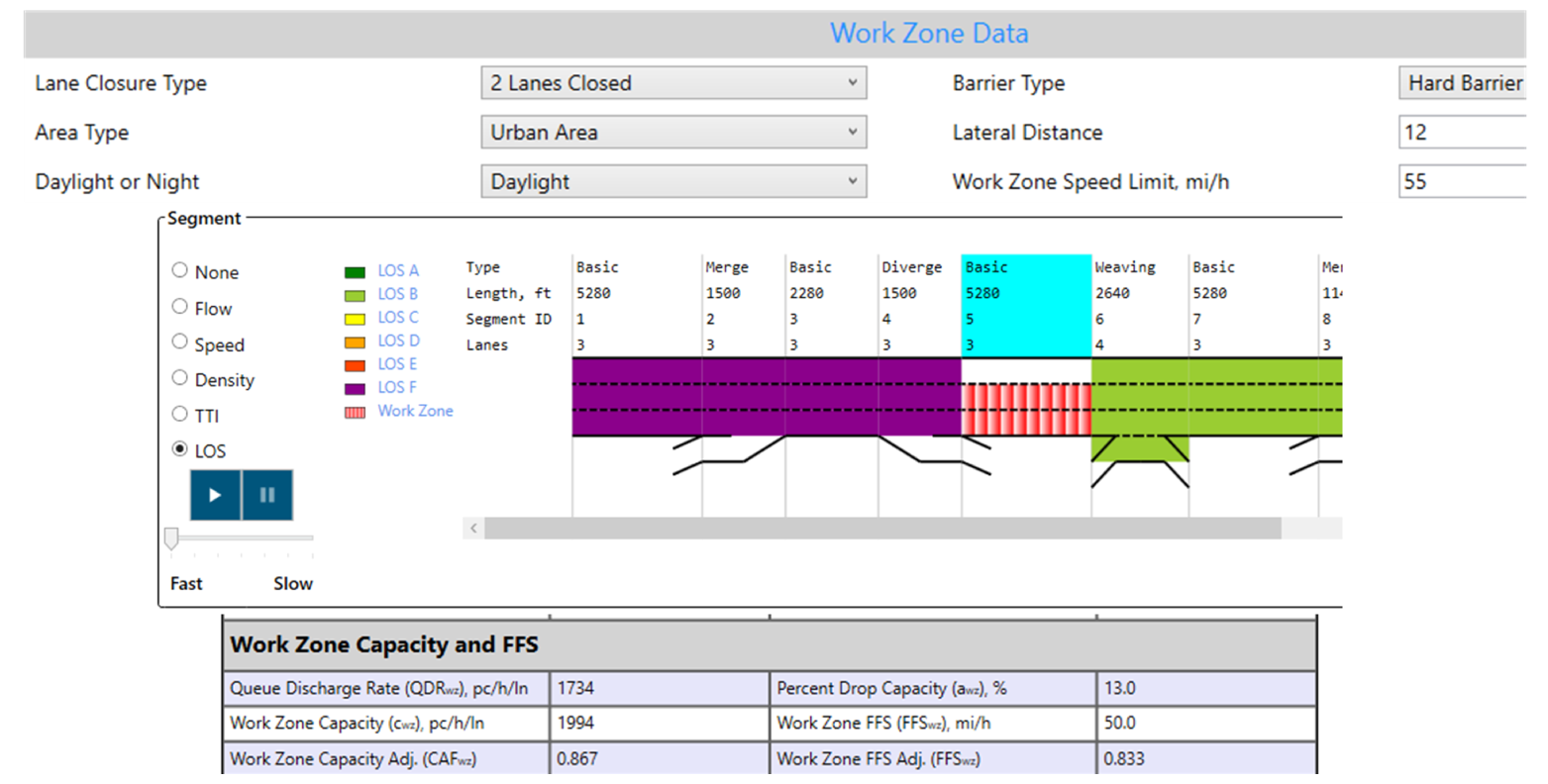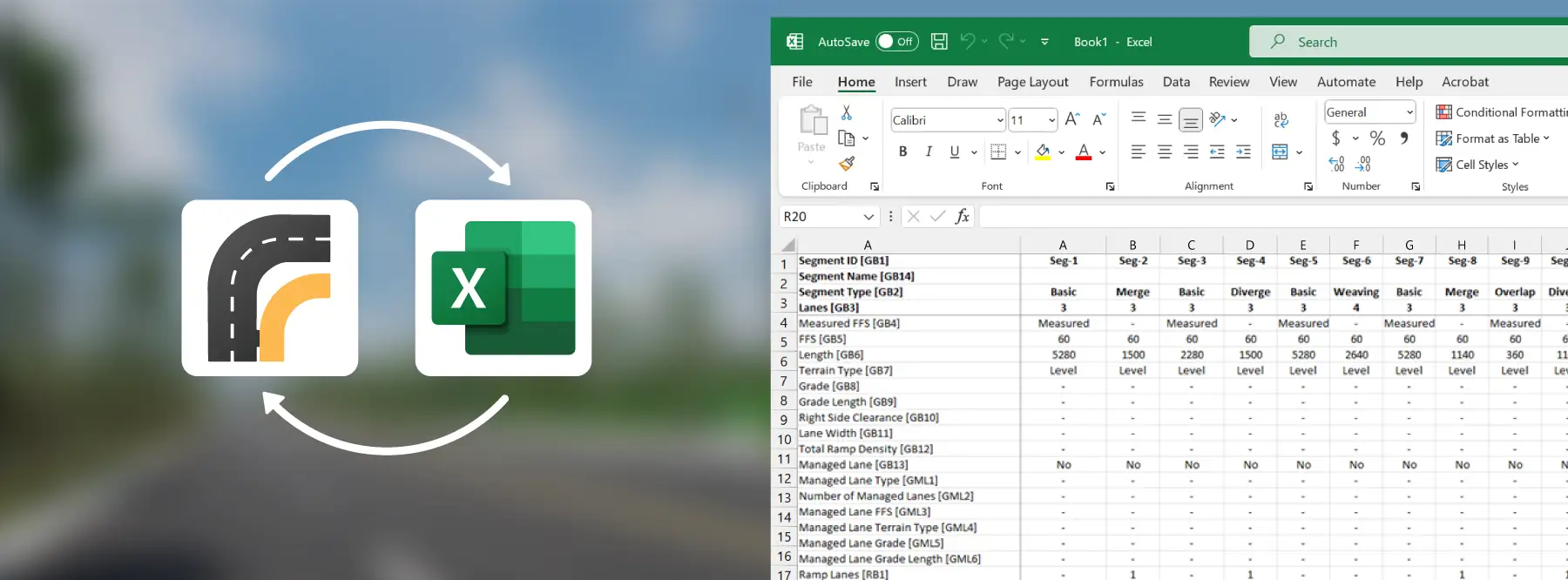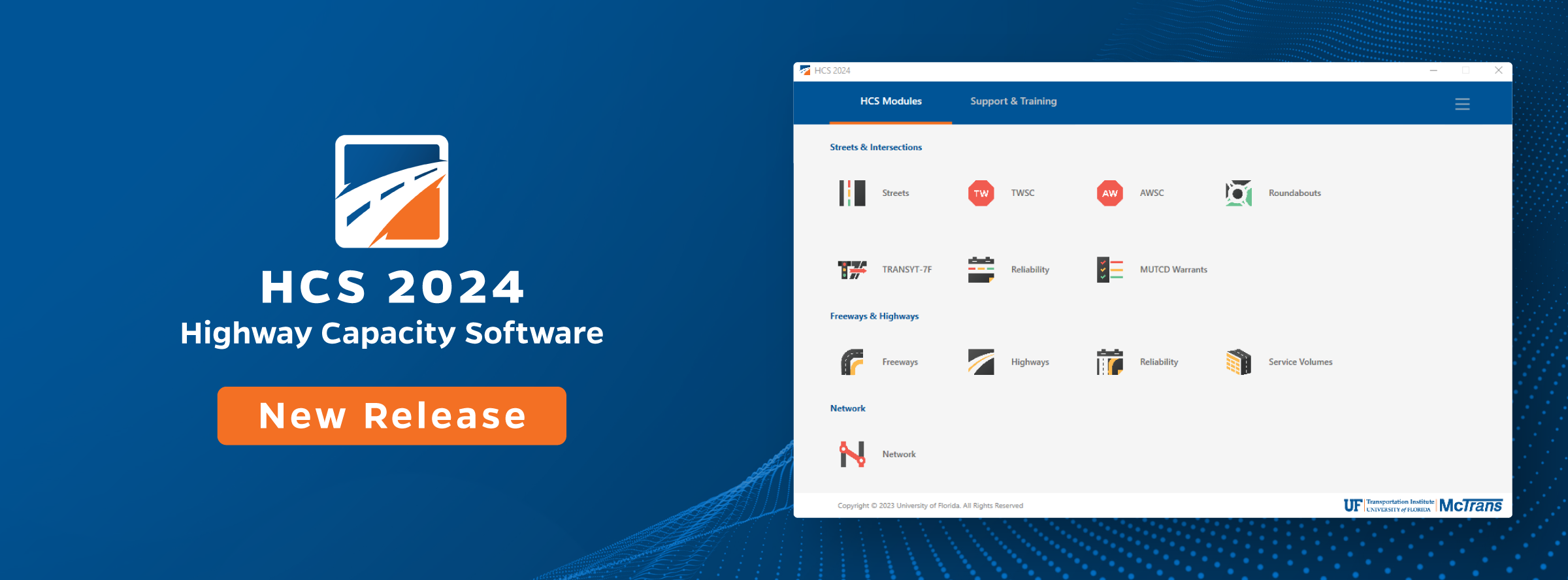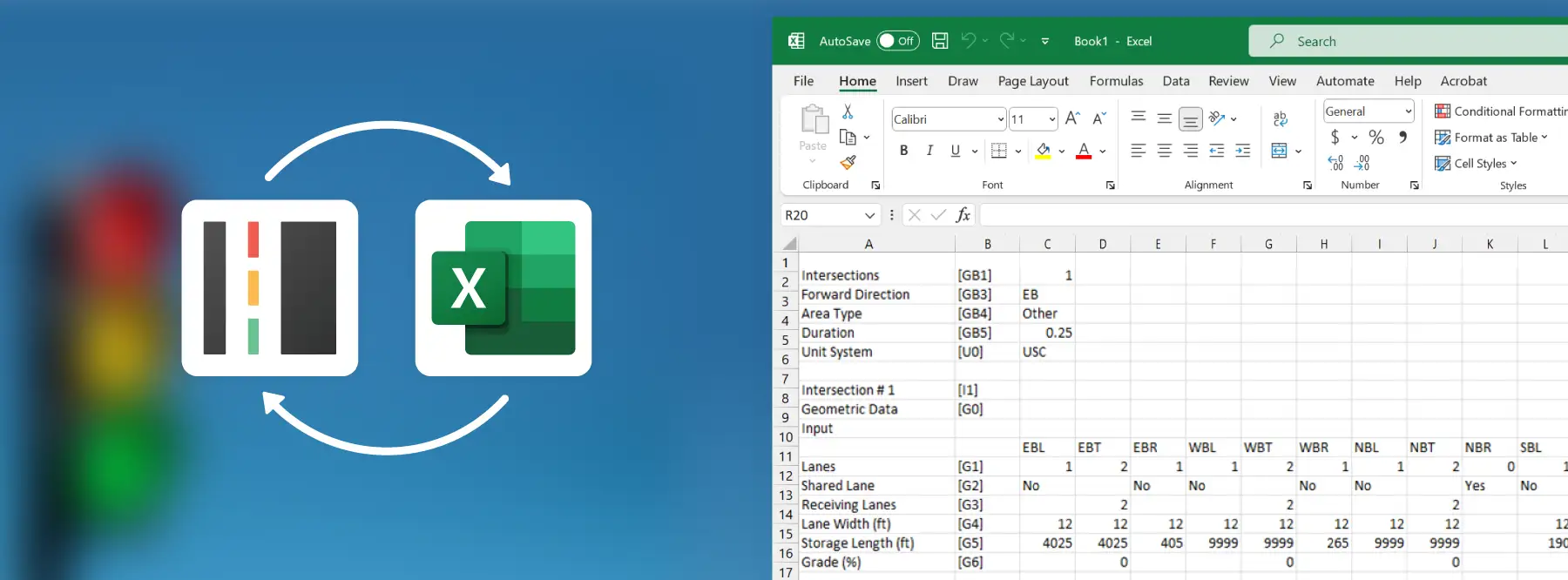McTrans Center’s YouTube Page
McTrans Center’s YouTube page provides a diverse set of educational and informative videos freely available for everyone.
Highway Capacity Software 2022
Feedback
HCS User Group
The HCS User Group is a professional group hosted on LinkedIn to directly connect the HCS users. The users are allowed to communicate directly with each other and share their questions and lessons learned while using the HCS tool. You can join this group by clicking here.
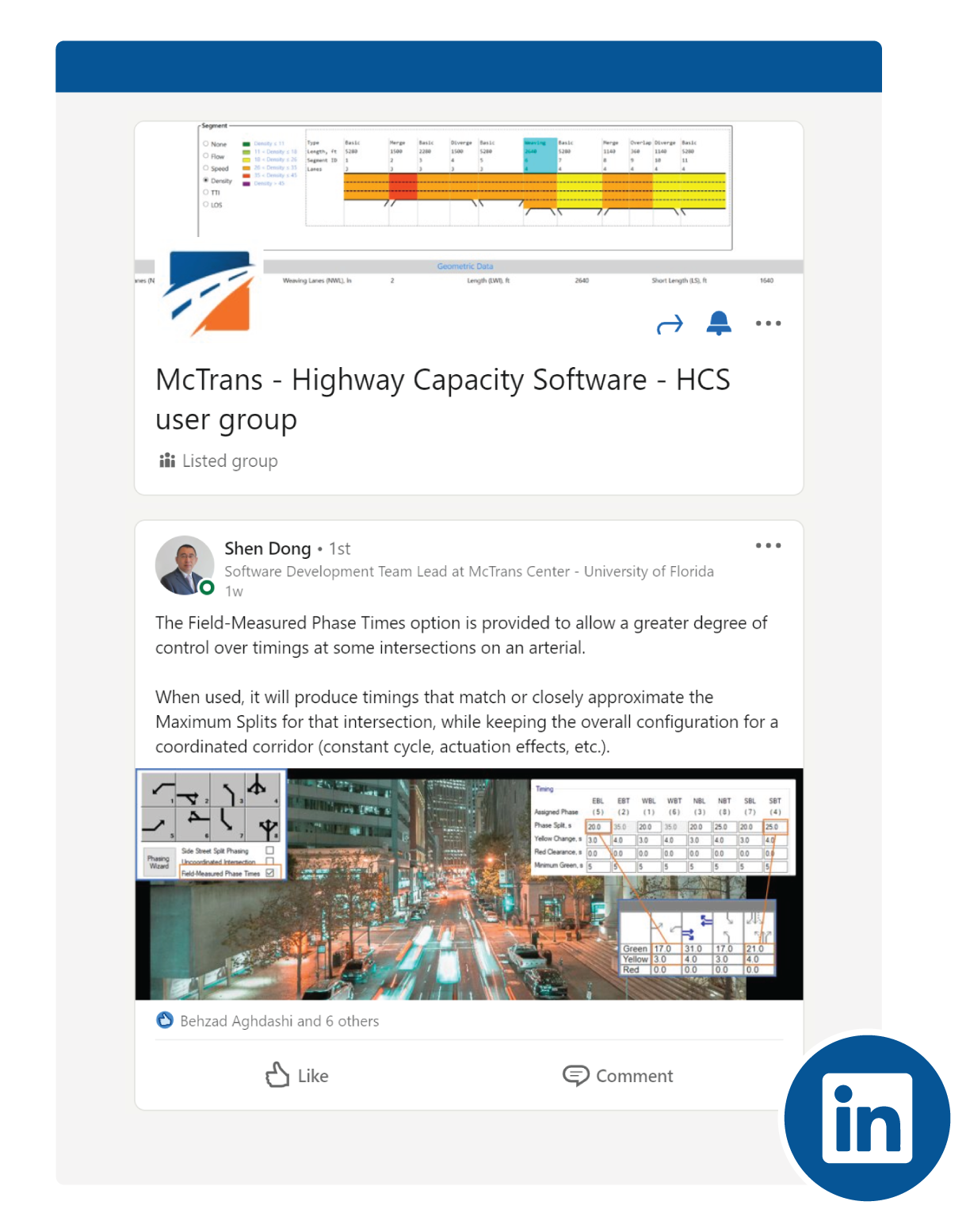
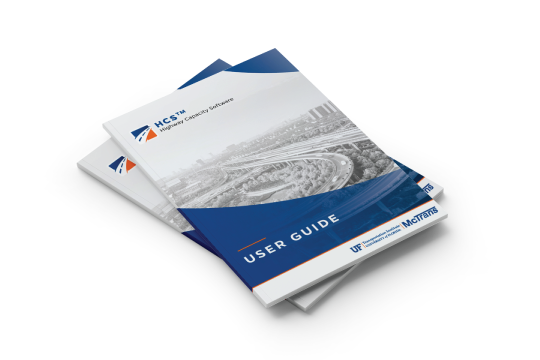
HCS User Guide
The Highway Capacity Software (HCS) comes with a comprehensive user guide to provide a reliable reference. Details of inputs and outputs are discussed. Moreover, you can find where the parameters are located to adjust/calibrate the analysis. The User Guide is available inside every version of HCS by pressing CTRL+G buttons or accessing through the main menu.
Highway Capacity Manual
The basis of HCS analysis is the Highway Capacity Manual (HCM) which provides comprehensive detail on every methodology. If theoretical aspects of the capacity analyses are the subject of research and study, please do not forget to consult with this document.
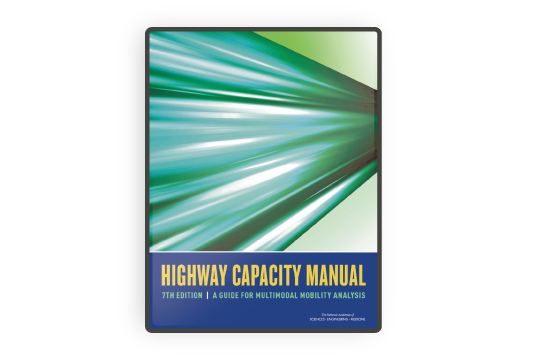
Tips & Hints
Emissions Model for Urban Streets
Emissions Model for Urban Streets
The emissions model was based on NGSIM Data, and pollutant outputs are calculated for urban segments as a function of Vehicle-MilesTravelled and the number of STOPS for vehicles. As a result, environmental measures benefit from both reductions in travel quantity and congestion/delay mitigation measures.
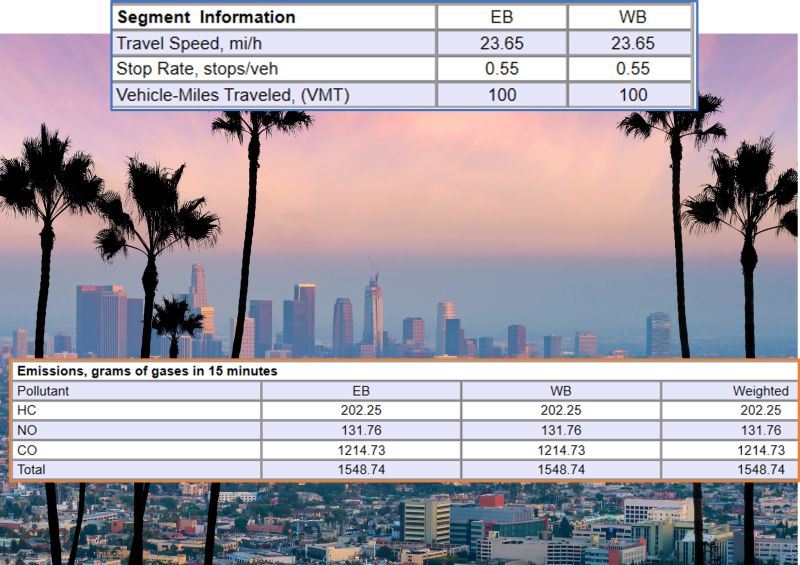
Multilane Highways Merge/Diverge and Weaving Segments
Multilane Highways Merge/Diverge and Weaving Segments
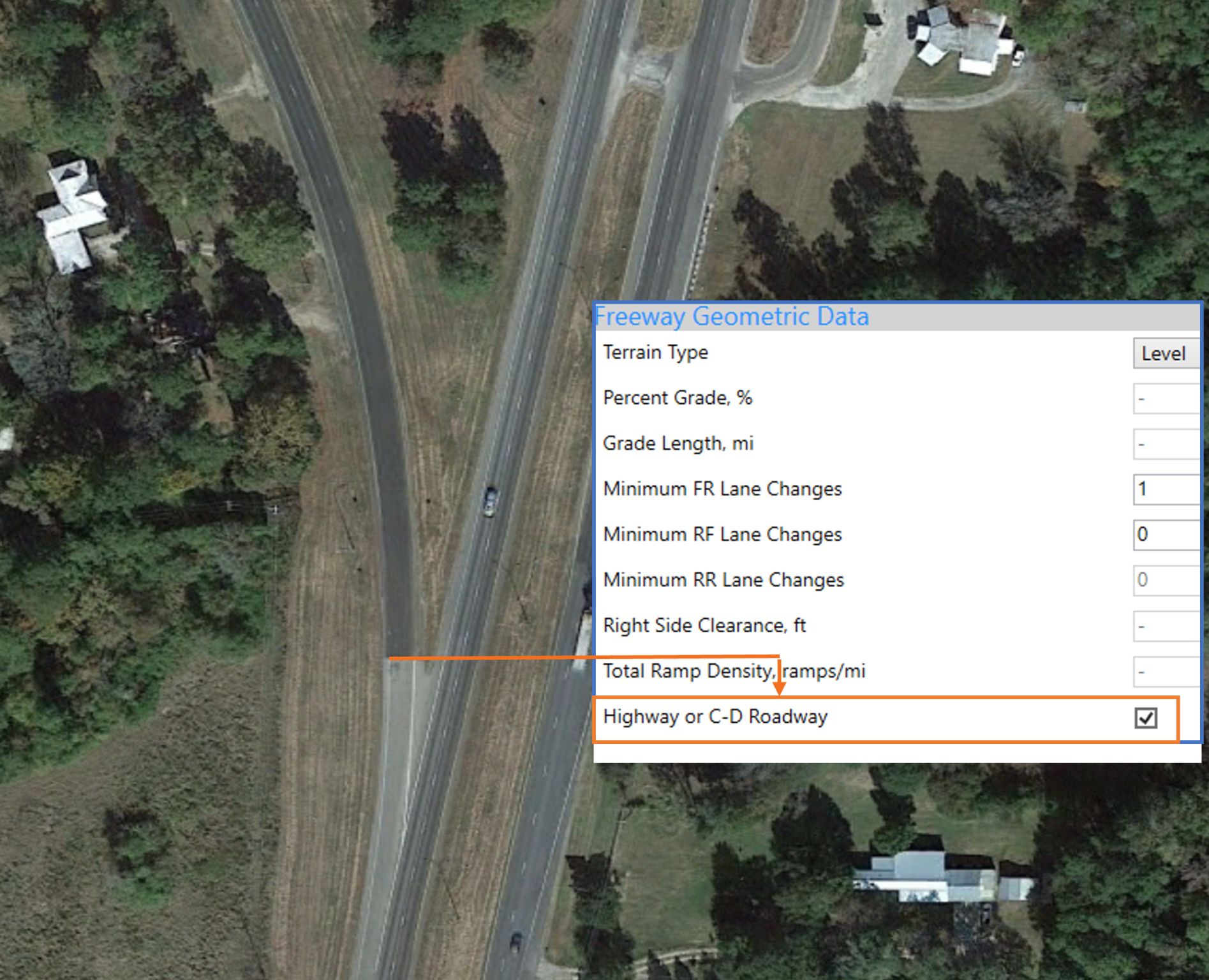
The HCM can analyze isolated merge, diverge, or weaving segments on multilane highways and C-D Roads.
On the HCS Freeways module, for isolated segment analysis, the option “Highway or C-D Roadway” is used to analyze ramps or weaving segments on multilane highways.
Note that other parameters, noticeably the FFS, must match those of multilane highways for the method to work consistently.
Super 2 (2+1) Two-Lane Highways
Super 2 (2+1) Two-Lane Highways
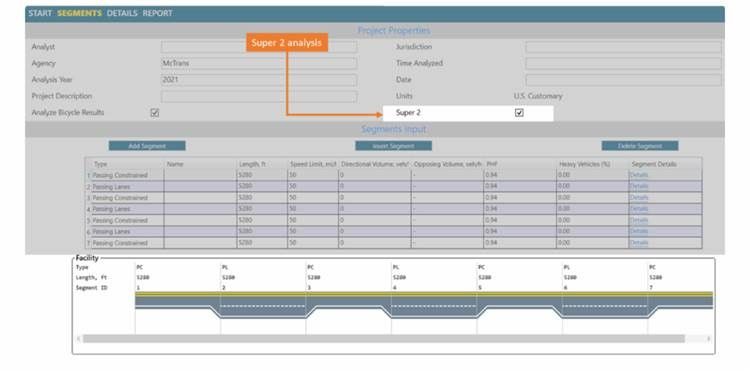
A Super 2 Highway, also called “2+1 Highway”, is a two-lane highway configuration with a continuous three-lane cross-section, with the middle lane being a passing lane that alternates direction.
HCS implements the research project NCHRP 17-65 – Improved Analysis of Two-Lane Highway Capacity and Operational Performance, incorporated in the 7th edition of the HCM, which includes equations to measure the performance of this highway type.
Delays for the Main Street at TWSC Intersections
Delays for the Main Street at Two-Way Stop-Controlled Intersections
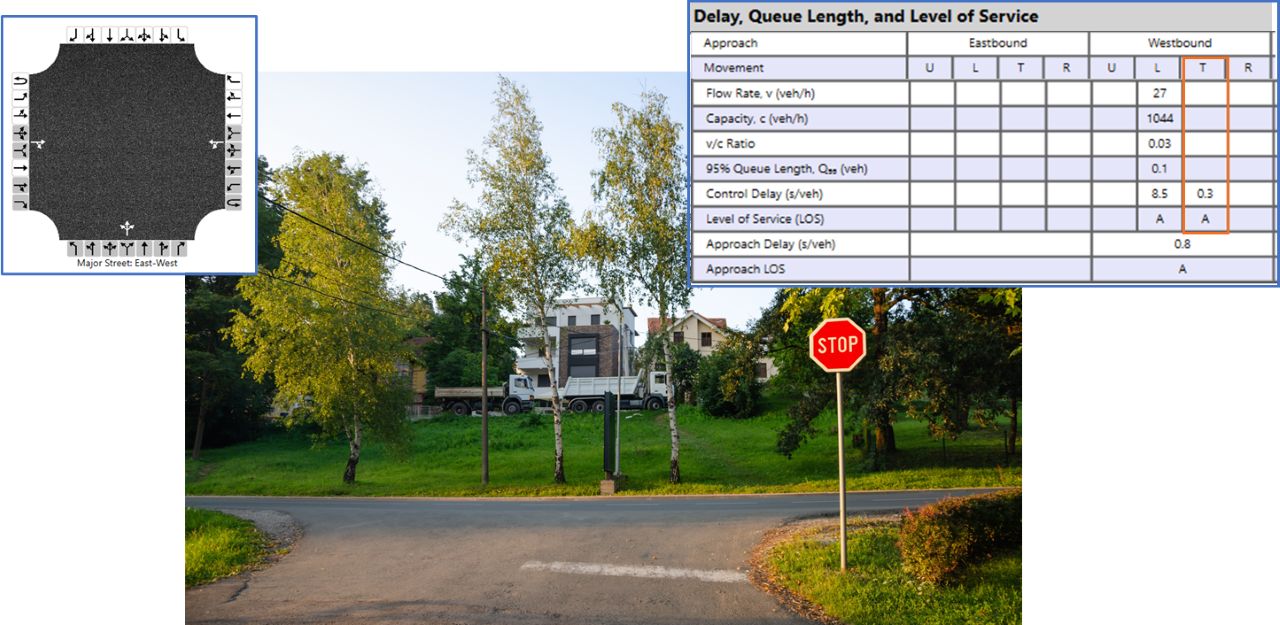
At two-way stop-controlled intersections, Rank 1 movements (main street through and right-turns) are free. When shared lanes are used, the left-turn movements (Rank 2) cause delays that may affect other main street movements.
Modern Roundabout Methodology
Modern Roundabout Methodology
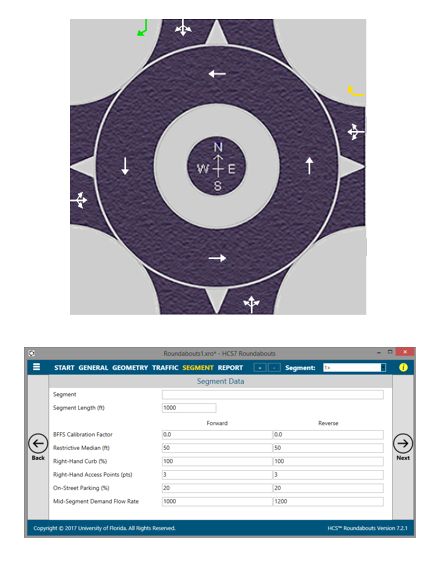
HCS 2022 implements the latest roundabout procedures from the 7th Edition of the Highway Capacity Manual, including the features:
- Updated capacity model with higher average capacities and calibration parameters
- One or multiple-lane roundabouts
- Yielding or Non-Yielding bypass lanes
- Roundabout corridors, with analysis procedures and performance measures for sequential roundabout intersections and the segments between them.
Calculation Mode
Calculation Mode
The Streets module in HCS provides the user with two calculation modes.
The Auto-Calculate option is set as the default option for Streets and recommended for most projects,
updating all calculations automatically whenever any input is changed.
When the Auto-Calculate option is off, all model outputs, including Control Delay, Level of Service (LOS), and the final phasing/timing diagrams, are frozen and grayed out until the user pushes the button “Force
Calculations,” as shown below. This option gives the user a higher degree of control when input changes
are applied to the model, which can speed up the inputting process for larger projects and help track
adjustments to the project’s operational performance.
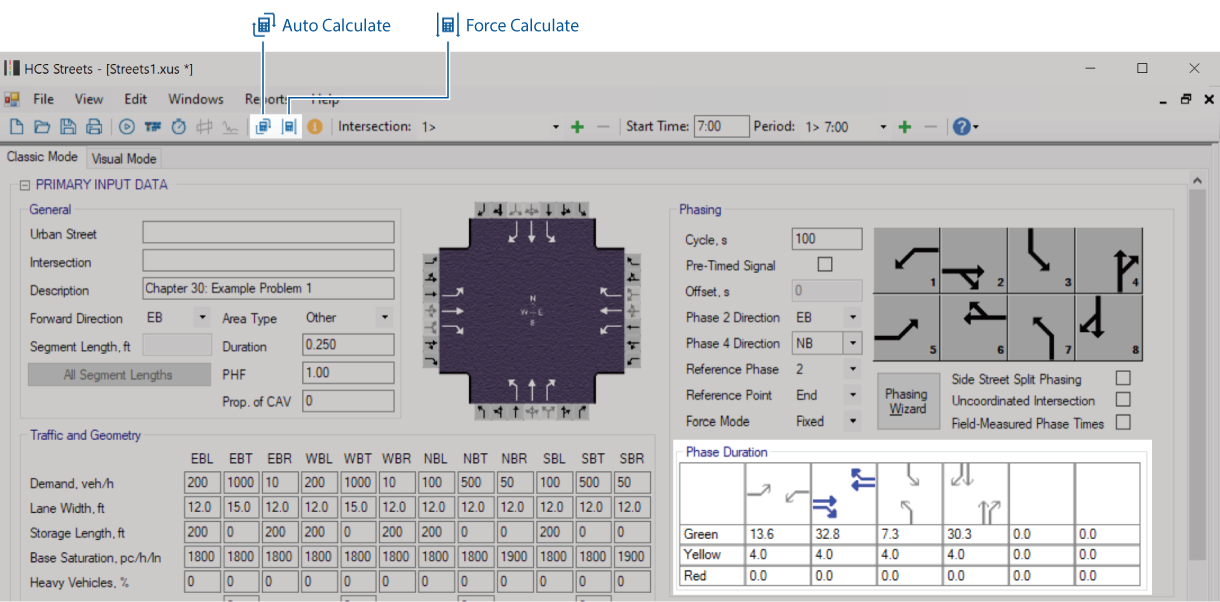
Copy and Paste the HCS Formatted Report to Excel
Copy and Paste the HCS Formatted Report to Excel
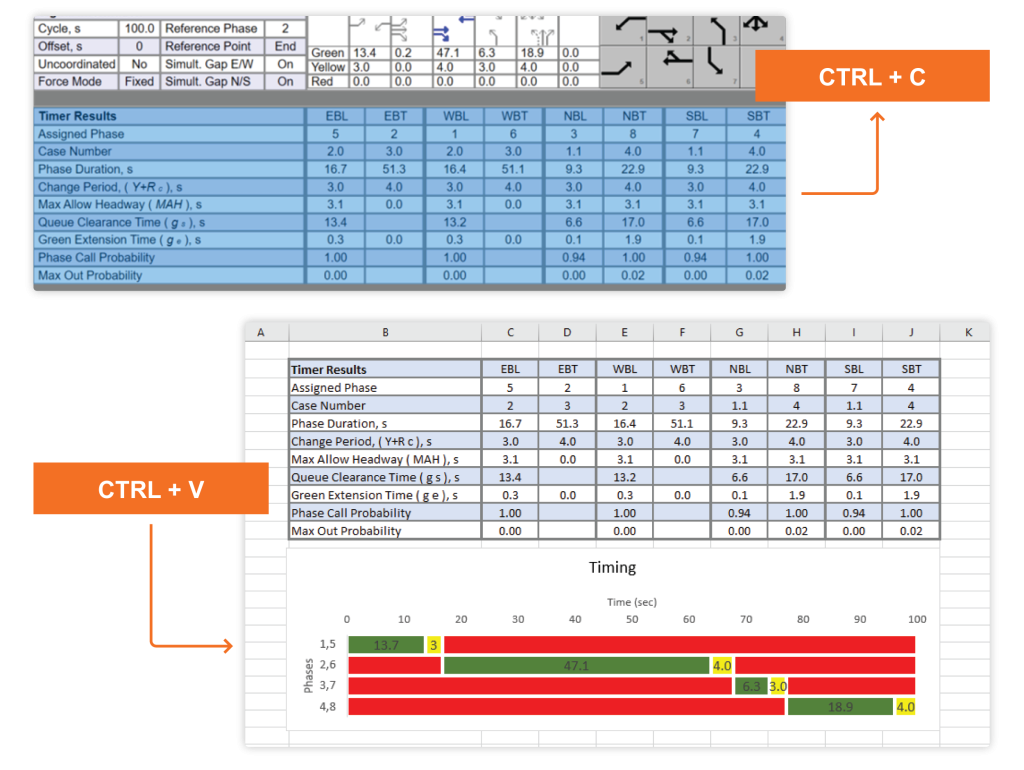
Users can copy selected table data on HCS modules formatted report and paste it directly to Excel, allowing for in-house customization of reports by using the standard MS Windows CTRL+C and CTRL+V keys.
In the example shown above, signal timing results are copied over a preformatted spreadsheet which automatically generates additional graphs.
Modeling Work Zones in Urban Streets
Modeling Work Zones in Urban Streets
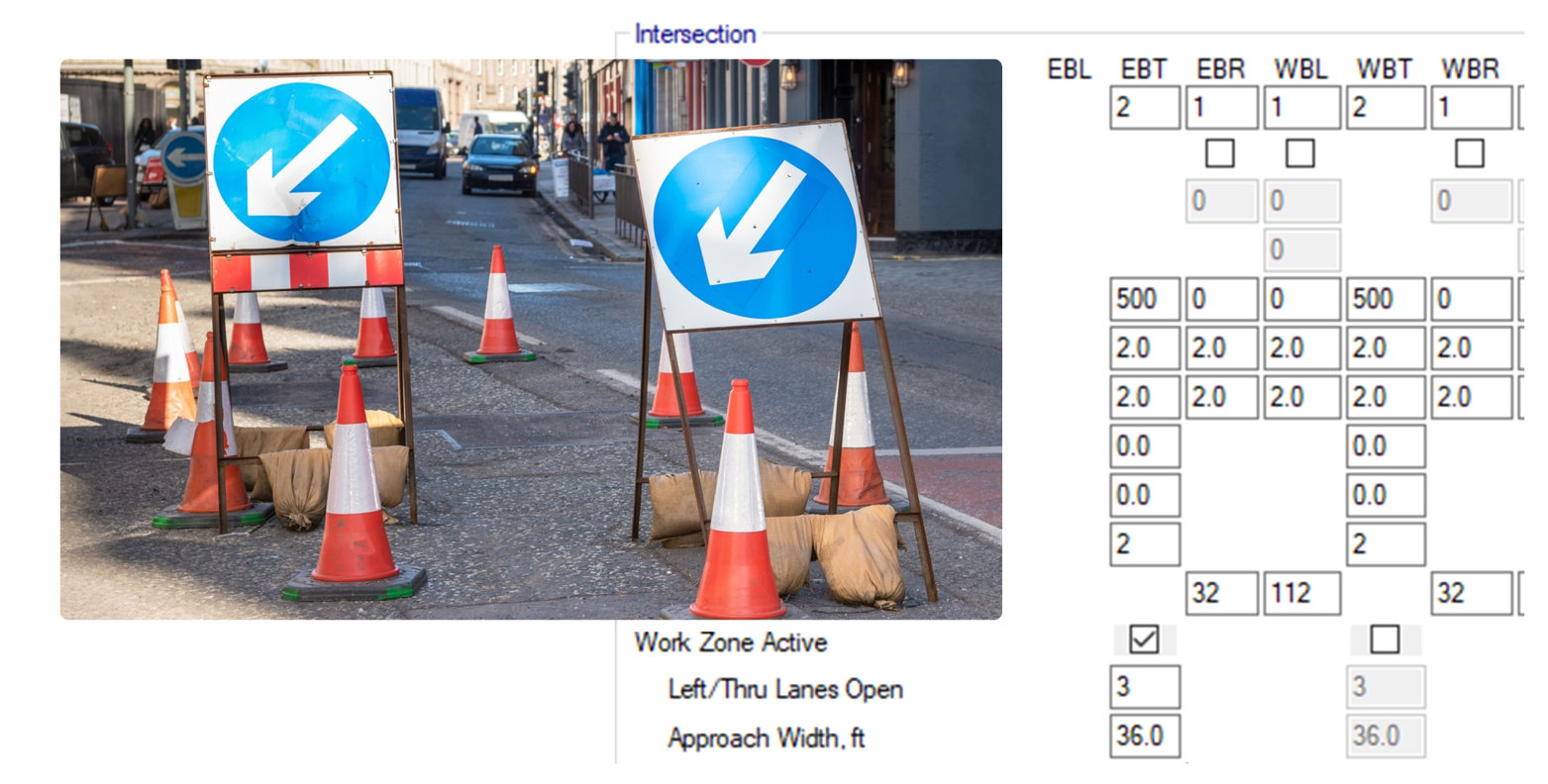
The HCS Streets module can model the impact of work zones on signal saturation flows and capacities based on the number of open lanes and approach width. Expected queues and delays are provided, and can support planning-level or cost-benefit analysis without the need for additional tools.
Modeling Work Zones in Freeways
Modeling Work Zones in Freeways
Check out six Work Zone elements impacting freeway operations included in the current Work Zone analysis with HCS:
– Shoulder or up to 2 lane closure
– Urban or rural area
– Daylight or nighttime effects
– Hard or soft barriers
– Lateral Distance to the barrier
– Temporary Speed Limit
Work Zones report and visual outputs are generated, including adjusted capacity and queue discharge rate.
Calibrating Queue Length Percentile
Calibrating Queue Length Percentile
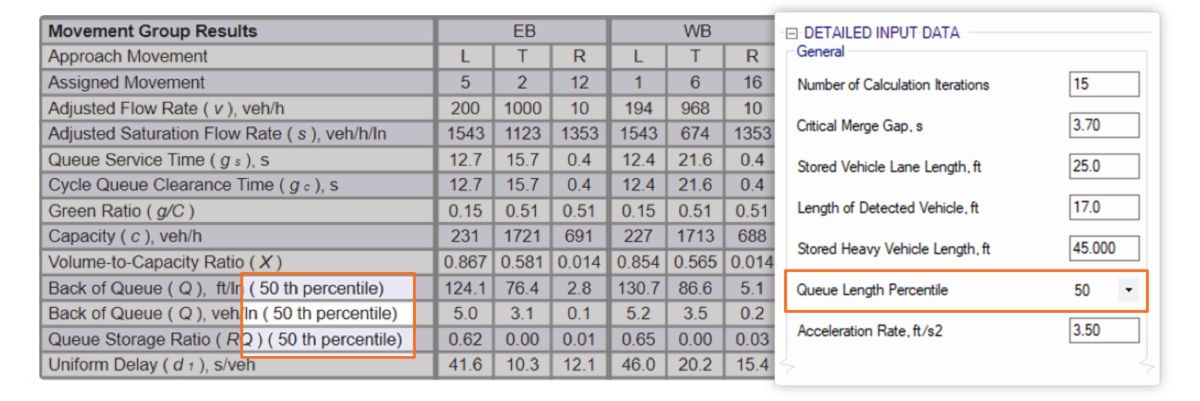
The default percentile of the queue length distribution used to calculate the Back of Queue (Q) length output in HCS Streets is the 50th percentile of the queue length distribution.
It is possible to change this default based on user preferences or agency requirements under the Detailed Input Data section of the user interface.
Percentile values of 50, 85, 90, and 95 can be used. Changes in this input will reflect on the calculations and labels on the formatted report.
HCS Compliance to HCM Chapter 6
HCS Compliance to HCM Chapter 6

In the example shown, a signalized intersection with insufficient storage length for the EBL movement and long spillback was exported to TSIS-CORSIM using a one-click feature on the HCS Streets module, where it is possible to visualize the queue spillback reaching the upstream intersection.
Lane Add and Lane Drop Segments
Lane Add and Lane Drop Segments
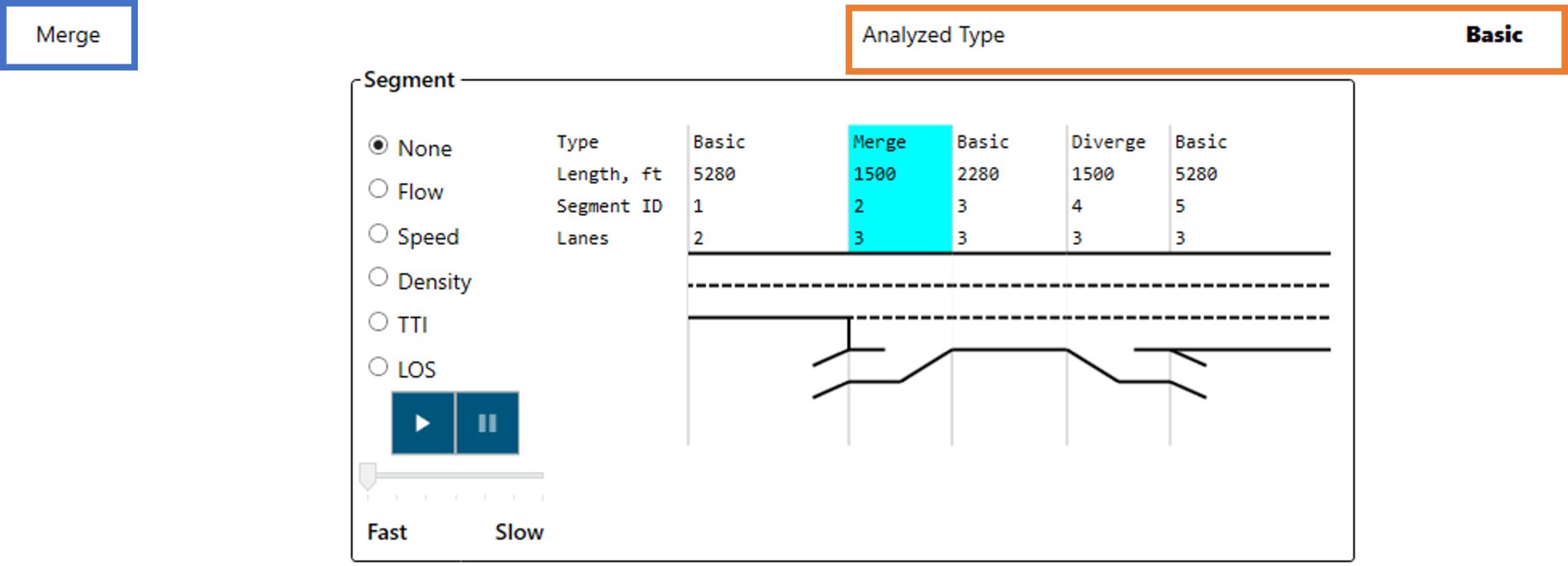
In these cases, the Merge segment should be treated as a Basic Freeway segment with the appropriate number of lanes. The Highway Capacity Software Freeways Facilities module automatically identifies such situations, facilitating the user to model the facility while ensuring HCM compliant analysis.
Information Box
Information Box
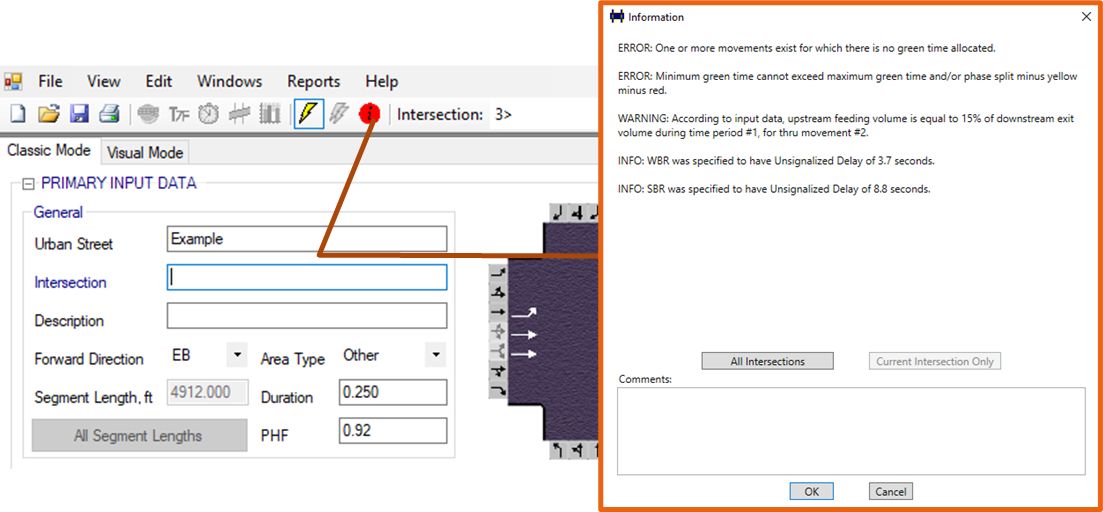
ERROR: there is an issue with the input data, which prevents the methodology from providing valid results.
WARNING: this warns users that HCS procedures will adjust some input data to comply with HCM or software requirements. Users may want to review their inputs, but results will still be produced.
INFO: these messages provide additional information that might be useful. These include cases where default values are changed or optional inputs are used. Results are produced normally.
The message with the most critical level defines the color of the icon displayed on the interface. A Green icon means no warning or errors exist.
Recall Mode for Actuated Signals
Recall Mode for Actuated Signals
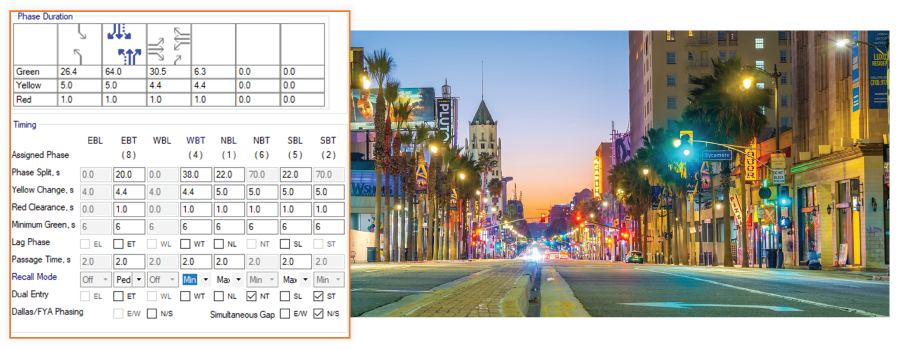
Off: phases may be skipped in the absence of vehicular demand, resulting in average green times close to the minimum.
Min: Service the phase at least until its minimum green interval times out.
Max: Displays green indication for its maximum duration, similar to pre-timed control.
Ped: Place a pedestrian call on the phase and then service the phase for at least the pedestrian walk and clear times.
Modeling Option Lanes in Freeway Weaves
Modeling Option Lanes in Freeway Weaves
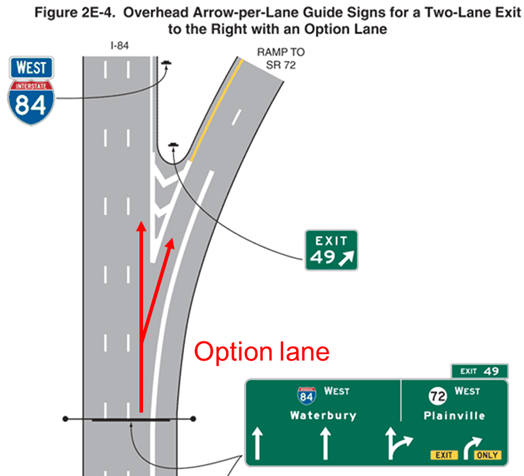
Source: Manual on Uniform Traffic Control Devices (MUTCD-2009)
Modeling freeway weaving – required inputs
The HCM freeway weaving methodology requires inputs related to lane-changing configuration, as follows:
- LCRF = minimum number of lane changes that a ramp-to-freeway weaving vehicle must make to complete the ramp-to-freeway movement successfully.
- LCFR = minimum number of lane changes that a freeway-to-ramp weaving vehicle must make to complete the freeway-to-ramp movement successfully.
- NWL = number of lanes from which a weaving maneuver may be completed with one lane change or no lane changes.
How do option lanes affect the lane-changing inputs?
When an option lane exists, the freeway-to-ramp maneuver at the diverge point can be made without a lane change. If this principle is not observed, the lane-changing inputs will be coded incorrectly, resulting in inaccurate analyses for the entire segment. The figure below illustrates the cases of an incorrect modeling (when the exit maneuver is counted as a lane change) and the correct modeling approach (the exit maneuver is not counted as a lane change):
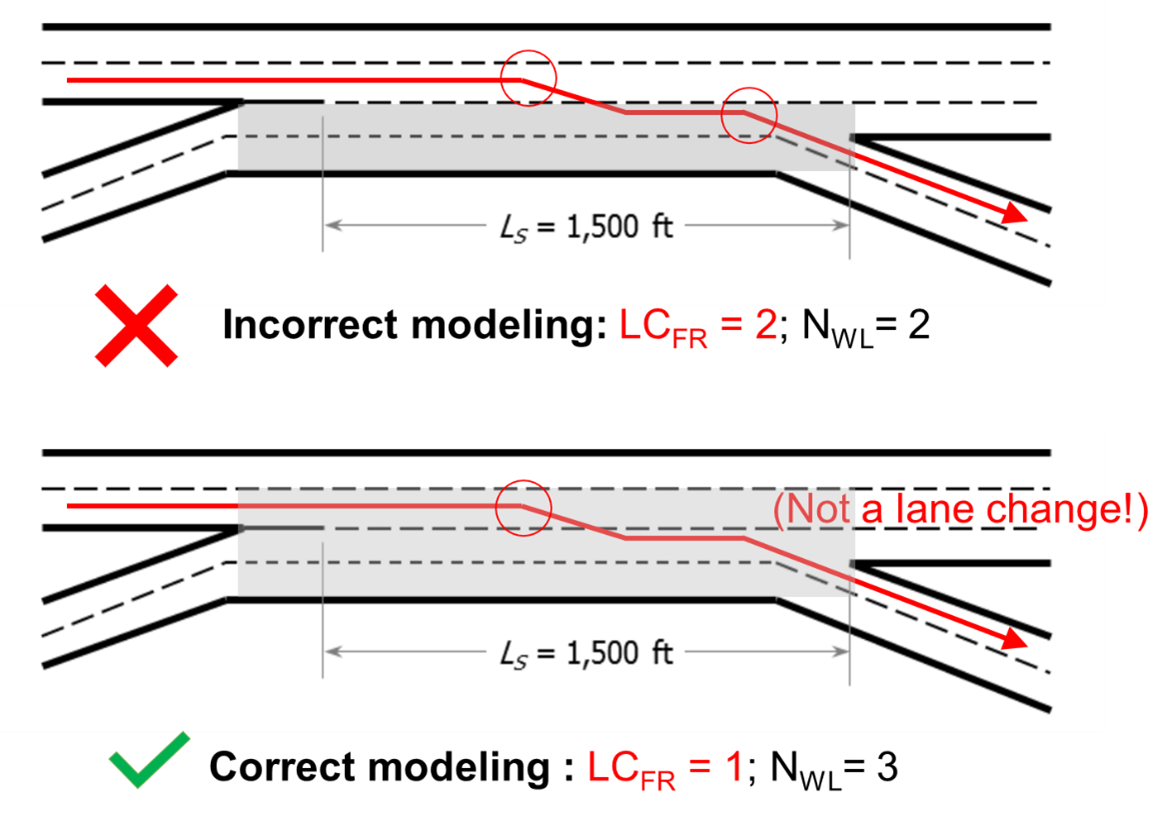
Articles
Streamline Freeway Modeling with .CSV Import/Export Feature
Dr. Fabio Sasahara2024-01-23T21:43:52+00:00Categories: HCS|
A traffic study usually involves a high volume of data for inputs and outputs. The quality [...]
4 Exciting New Features in the HCS 2024 Release
Dr. Fabio Sasahara2023-09-13T20:51:42+00:00Categories: HCS|
It is almost that time of the year! Our team is wrapping up the release of the [...]
Integrating HCS Signal Analyses with Excel for Efficient Traffic Studies
Dr. Fabio Sasahara2024-01-23T21:44:13+00:00Categories: HCS|
A traffic study usually involves a high volume of data inputs and outputs. The quality of [...]
Resources
User Guides
Explore documentation and helpful information about the software.
EULA
View the End-User License Agreement.
